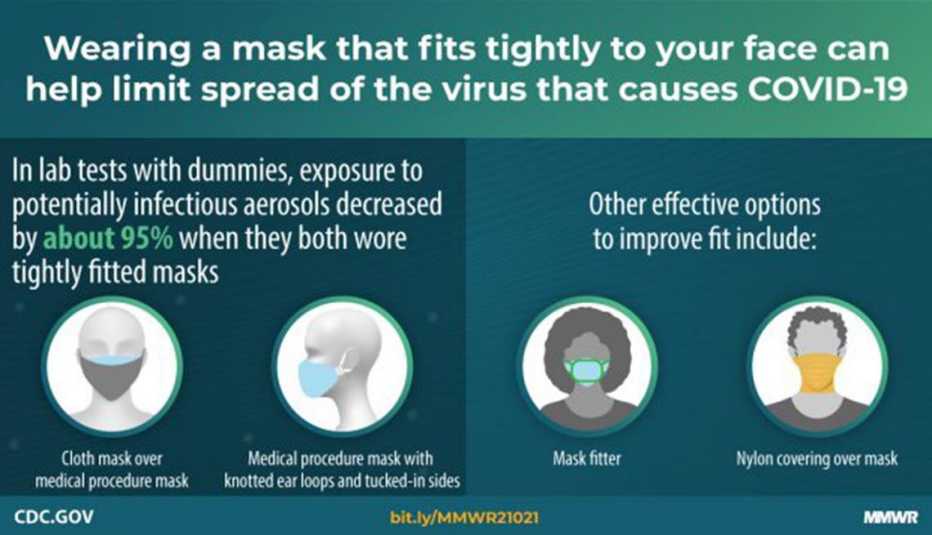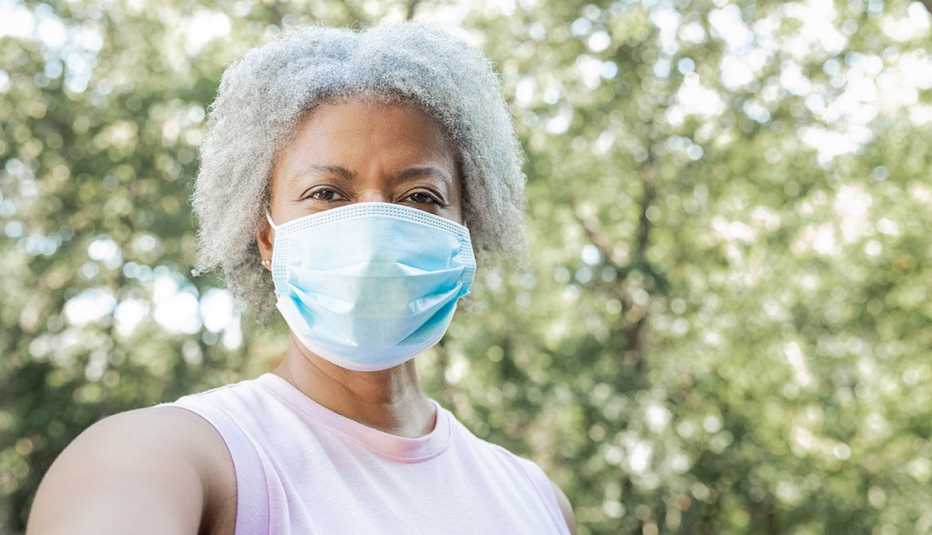Staying Fit
With the discovery of new, faster-spreading coronavirus strains in the U.S, it might be time to double down on face masks — literally — by wearing two at a time.
Layering a cloth mask over a disposable medical procedure mask significantly boosts your protection against the coronavirus by ensuring a tighter fit against your face, a new study from the U.S. Centers for Disease Control and Prevention (CDC) shows.


AARP Membership— $12 for your first year when you sign up for Automatic Renewal
Get instant access to members-only products and hundreds of discounts, a free second membership, and a subscription to AARP the Magazine.
The CDC study also showed that you can substantially improve the performance of a surgical mask by knotting the ear loop strings where they meet the mask and tucking in mask edges. That eliminates gaps on the sides.
Following the release of the study, the CDC published new guidance on how to improve your mask that emphasized the importance of fit. “Make sure your mask fits snugly against your face,” the CDC says. “Gaps can let air with respiratory droplets leak in and out around the edges of the mask.”
Although COVID-19 vaccination has started, masking is still important because the virus will continue to spread and sicken people until most of the population is immunized. And with the discovery of new variants that could be up to 70 percent more transmissible, some experts say it's even more prudent to wear not just any face covering, but a high-quality one (or two).
"Last year, we wanted to get as many people to wear masks as possible,” Marr said. “This year, with new, more transmissible variants, we really need to think about improving our masks.”
All masks are not created equal
Many Americans have been wearing the same cloth masks for months — in many cases, homemade versions originally created to ease a limited supply. These days, however, there are hundreds of options for sale, including nonmedical disposable surgical masks, and cloth versions with multiple layers and special filters.
Studies show that not all masks are created equal; construction, materials and fit make a difference.
"When I think of who I want to wear a mask with increased fit and filtration, I think of older adults and vulnerable people with underlying conditions,” said Monica Gandhi, M.D., an infectious disease doctor and professor of medicine at the University of California, San Francisco.
Gandhi and Marr co-authored a commentary in Cell Press on Jan. 15 with recommendations about how to improve the protection you get from your mask.
Other countries have already taken steps to get people to wear higher-quality masks: Hong Kong distributed six-layer masks to all of its citizens; Austria sent high-grade medical masks (the equivalent of N95s) to residents over age 65; and Germany recently began mandating medical-grade masks in shops and on public transit.





































































